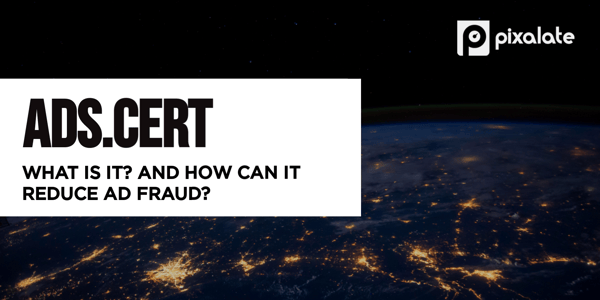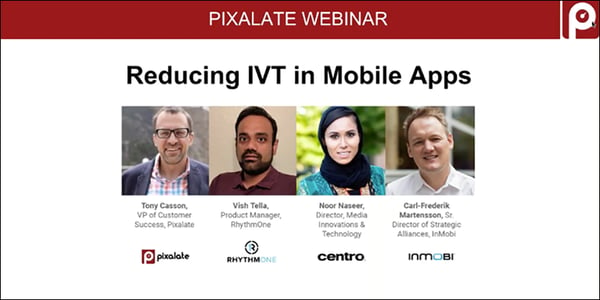
This week's review of ad fraud and quality in the digital advertising space.

Pixalate's detailed blog post dives into the IAB's upcoming ads.cert initiative, which aims to address the falsification of information in the bid request. If you think of a programmatic ad transaction as a huge game of telephone — in which many different players have access to the message from Point A to Point Z — ads.cert essentially allows the final player (the buyer) to validate the original message with the first player (the seller).
Learn more about ads.cert to see how it works and how it can help reduce ad fraud in programmatic.

Pixalate recently hosted a webinar featuring experts from RhythmOne, Centro, and InMobi to discuss best practices for reducing invalid traffic ("IVT") in mobile apps. You can download the webinar on demand here, or read the recap and watch the webinar on our blog. The panel experts discuss the challenges that are unique to mobile apps and reveal some of the best tips and tricks for reducing IVT within mobile apps.

According to the Wall Street Journal, AT&T is "in talks" to buy AppNexus for "around $1.6 billion." The WSJ notes that such a deal "would give the telecom giant a foothold in digital ad sales as it seeks to become a challenger to Alphabet Inc.’s Google and Facebook Inc."

"It’s been two years since the Association of National Advertisers, working with consultancy Ebiquity and investigative firm K2, dropped a damning report on agency transparency," wrote AdExchanger. But, per AdExchanger, according to Bill Duggan, group EVP of the ANA, transparency is "at an all-time low." AdExchanger wrote: "In a way, the K2 report deepened the rift between advertisers and agencies," the article added.

"Advertiser Perceptions polled 700 US marketers in May and found that there's debate on how to define in-housing," reported eMarketer. "Respondents were evenly split between three options: working with a demand-side platform (DSP) and agency, working with just a DSP or managing campaigns internally through enterprise software."
Sign up for our blog to stay updated with new stats, trends, and analysis of digital ad fraud.
*By entering your email address and clicking Subscribe, you are agreeing to our Terms of Use and Privacy Policy.
These Stories on Weekly Recaps
*By entering your email address and clicking Subscribe, you are agreeing to our Terms of Use and Privacy Policy.

Disclaimer: The content of this page reflects Pixalate’s opinions with respect to the factors that Pixalate believes can be useful to the digital media industry. Any proprietary data shared is grounded in Pixalate’s proprietary technology and analytics, which Pixalate is continuously evaluating and updating. Any references to outside sources should not be construed as endorsements. Pixalate’s opinions are just that - opinion, not facts or guarantees.
Per the MRC, “'Fraud' is not intended to represent fraud as defined in various laws, statutes and ordinances or as conventionally used in U.S. Court or other legal proceedings, but rather a custom definition strictly for advertising measurement purposes. Also per the MRC, “‘Invalid Traffic’ is defined generally as traffic that does not meet certain ad serving quality or completeness criteria, or otherwise does not represent legitimate ad traffic that should be included in measurement counts. Among the reasons why ad traffic may be deemed invalid is it is a result of non-human traffic (spiders, bots, etc.), or activity designed to produce fraudulent traffic.”

